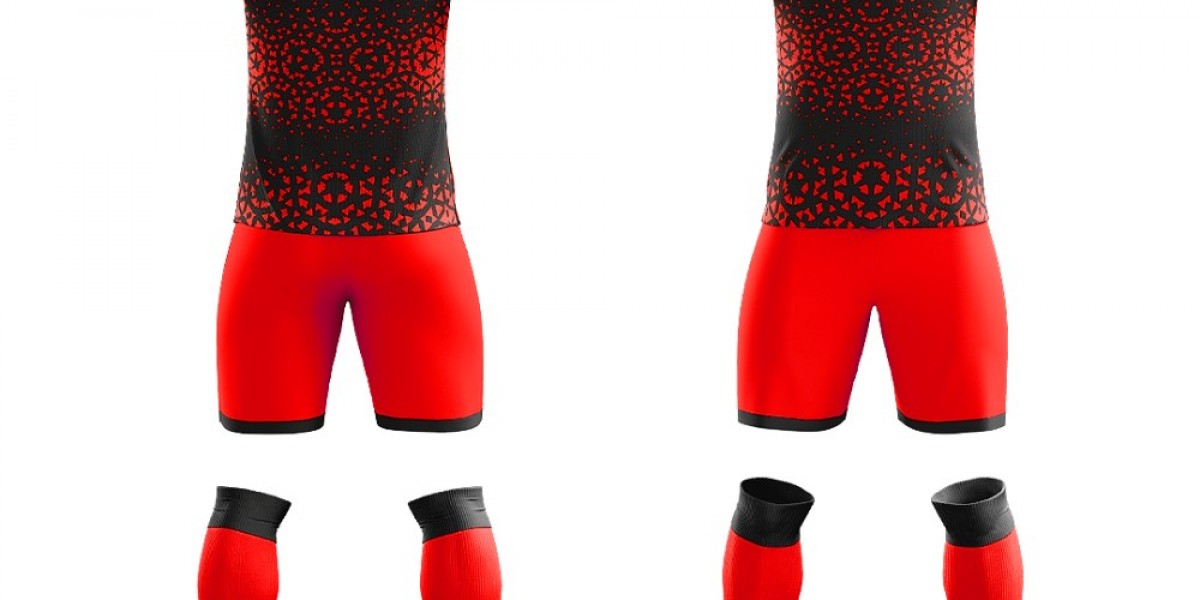Soccer, known as the world's most popular sport, is not just about the players, the goals, or the tactics. It’s also about the identity, culture, and history that soccer uniforms represent. From their humble beginnings to the high-tech designs of today, Soccer Uniforms have evolved significantly, becoming a symbol of team pride, fan loyalty, and even fashion statements. This article delves into the history, design, functionality, and cultural impact of soccer uniforms.
1. The History of Soccer Uniforms
Early Beginnings
In the early days of soccer during the 19th century, players wore heavy, woolen shirts and long pants. These uniforms were far from ideal for the physical demands of the game. Teams often distinguished themselves by wearing different colored caps or sashes, as matching uniforms were not yet standardized.
The Introduction of Team Colors
By the late 1800s, soccer clubs began adopting specific colors to represent their teams. For example, Blackburn Rovers wore blue and white, while Nottingham Forest sported red. These colors became a part of the team’s identity and helped fans identify their favorite players on the field.
The Shift to Lightweight Materials
In the mid-20th century, soccer uniforms transitioned from heavy wool to lighter materials like cotton and polyester. This change improved player comfort and performance, allowing for greater mobility and breathability during matches.
2. The Design of Modern Soccer Uniforms
Team Identity and Branding
Modern soccer uniforms are designed to reflect a team’s identity. Colors, patterns, and logos are carefully chosen to represent the club’s history and values. For example, FC Barcelona’s iconic blue and red stripes are instantly recognizable worldwide.
Sponsorship and Commercialization
The introduction of sponsor logos in the 1970s revolutionized soccer uniforms. Today, sponsor logos are a key feature of most kits, providing significant revenue for clubs. However, this has also led to debates about the balance between tradition and commercialization.
Customization and Personalization
Modern uniforms often include player names and numbers, allowing fans to connect with their favorite players. Customization has become a major trend, with fans purchasing replicas of their favorite player’s jersey.
3. The Functionality of Soccer Uniforms
Performance-Enhancing Fabrics
Today’s soccer uniforms are made from advanced materials like moisture-wicking polyester, which keeps players cool and dry. Some kits even incorporate compression technology to improve blood flow and reduce muscle fatigue.
Weather-Specific Designs
Uniforms are now designed to suit different weather conditions. For example, long-sleeved jerseys and thermal layers are used in colder climates, while lightweight, breathable fabrics are preferred for hot weather.
Safety and Durability
Modern uniforms are designed to withstand the rigors of the game. Reinforced stitching, tear-resistant fabrics, and UV protection are just a few features that ensure durability and safety for players.
4. The Cultural Impact of Soccer Uniforms
A Symbol of Unity
Soccer uniforms bring fans and players together, creating a sense of belonging and unity. Wearing a team’s colors is a way for fans to show their support and connect with their community.
Fashion and Pop Culture
Soccer uniforms have transcended the sport, becoming a fashion staple. Iconic kits from teams like Manchester United, Real Madrid, and the Brazilian national team have influenced streetwear and pop culture.
Collectibles and Memorabilia
Vintage soccer uniforms are highly sought after by collectors. Rare jerseys from historic matches or legendary players can fetch thousands of dollars at auctions, highlighting their cultural and emotional value.
5. The Future of Soccer Uniforms
Sustainable Materials
As environmental concerns grow, many brands are exploring eco-friendly materials for soccer uniforms. Recycled polyester and organic cotton are becoming popular choices, reducing the environmental impact of production.
Smart Technology
The future of soccer uniforms may include smart technology, such as embedded sensors to monitor player performance and health. This could revolutionize how teams train and compete.
Fan-Centric Designs
Brands are increasingly involving fans in the design process, allowing them to vote on colors, patterns, and even logos. This trend is likely to continue, making uniforms more inclusive and representative of the fan base.
Conclusion
Soccer uniforms are much more than just clothing for players. They are a reflection of a team’s history, a symbol of fan loyalty, and a canvas for innovation and creativity. From their humble beginnings to the high-tech designs of today, soccer uniforms have come a long way, evolving alongside the sport itself. As we look to the future, one thing is certain: soccer uniforms will continue to play a vital role in the game, uniting players and fans alike in their shared love for the beautiful game. Whether on the field or in the stands, the power of a soccer uniform lies in its ability to tell a story—one of passion, pride, and perseverance.








